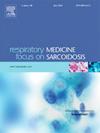Association of lifestyle components with prevalence of chronic obstructive pulmonary disease (COPD): Findings of a cohort study
IF 3.5
3区 医学
Q2 CARDIAC & CARDIOVASCULAR SYSTEMS
引用次数: 0
Abstract
Background
Chronic Obstructive Pulmonary Disease (COPD) is a complex condition influenced by various lifestyle factors. Dietary patterns, physical activity, and sleep quality play a crucial role in the prevalence and management of COPD.
Objectives
We aimed to evaluate the relationship between dietary patterns, physical activity, and sleep quality with the prevalence of COPD in the PERSIAN Organizational Cohort study at Mashhad University of Medical Sciences (POCM).
Methods
This cohort study utilized data from 12,000 participants in POCM. Dietary intake was assessed using a food frequency questionnaire, physical activity was measured using the International Physical Activity Questionnaire, and sleep quality was evaluated using the Pittsburgh Sleep Quality Index. Spirometry was performed to diagnose and categorize COPD severity.
Results
Out of the eligible 4269 participants, 3768 (91 %) were healthy and 373 (9 %) had COPD. Compared to the highest quartile, the second quartiles and third quartiles of the healthy dietary pattern were inversely associated with COPD prevalence, even after adjusting for confounders for the second and third quarters respectively. The second quartile of the fast-food dietary pattern was positively associated with COPD. Older age and poorer sleep quality were also significantly associated with higher COPD prevalence. Physical activity levels did not differ between healthy and COPD individuals.
Conclusions
Findings of this study indicate that healthy diet with more fruits, vegetables, and whole grains was related to reduced incidence of COPD, while the incidence of COPD was related to poor sleep quality. These findings highlight the possible interplay of lifestyle factors and respiratory health.
生活方式与慢性阻塞性肺病(COPD)发病率的关系:一项队列研究的结果
本文章由计算机程序翻译,如有差异,请以英文原文为准。
求助全文
约1分钟内获得全文
求助全文
来源期刊

Respiratory medicine
医学-呼吸系统
CiteScore
7.50
自引率
0.00%
发文量
199
审稿时长
38 days
期刊介绍:
Respiratory Medicine is an internationally-renowned journal devoted to the rapid publication of clinically-relevant respiratory medicine research. It combines cutting-edge original research with state-of-the-art reviews dealing with all aspects of respiratory diseases and therapeutic interventions. Topics include adult and paediatric medicine, epidemiology, immunology and cell biology, physiology, occupational disorders, and the role of allergens and pollutants.
Respiratory Medicine is increasingly the journal of choice for publication of phased trial work, commenting on effectiveness, dosage and methods of action.
 求助内容:
求助内容: 应助结果提醒方式:
应助结果提醒方式:


